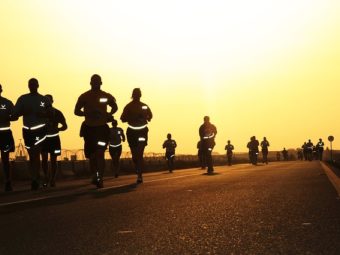So maybe you’re interested in learning how to ChiRun or ChiWalk but not sure if a workshop is for you.
If you have read the book(s) you probably have a basic concept of what you envision ChiRunning should look like. Most attendees have heard about it from a friend or read and/or heard about it from various forms of media. Some have read the book, others have flipped through the book while others have never seen the book. Some folks have been running for years, others are just starting out. Some have injuries that they are working through.
On the day of the workshop some Certified instructors will video your running prior to presenting ChiRunning instruction. This provides a starting point to begin your practice of ChiRunning. Most of the participants have never seen themselves run, let alone have a video running analysis. The goal of the video is seeing if what you feel is actually happening or something entirely different is going on. The other goal is looking at what is efficient and what is not. Pretty much everyone learns new things about their running
The instructors will usually ask each attendee about themselves and their running practice. We are trying to glean what each individual is hoping to address during the workshop. History of ChiRunning is then covered.
ChiRunning is comprised of four main components.
They are Posture, Ankle Lift, Lean, and Arm Swing. Each of the components are introduced and drills to help you feel what your muscle memory should be feeling are practiced. In my workshops, after the four have been covered and we have done a little ChiRunning, we review the videos from earlier. I find that the students now have a better perspective when looking at their video and trying to decipher what is Chi and what is conventional running.
The class is then introduced to strides and gears. Unlike regular running, our running style has a circular stride that opens up with speed. The other difference is your legs have to relax more while your core is tightening a little more. There are more exercises provided to help the class feel it.
Cadence is then introduced. Learning to step to a beat helps us keep our circular stride. Participants learn to how to run with a metronome keeping a constant beat regardless of their speed. Breathing, hills, and the Knee Bending Exercise are introduced and practiced.
After the above are completed another video is done. This time the runner is asked to work with one form focus that resonated with them from the workshop. Videos are reviewed and most all participants will have an improvement from their earlier video.
Training plans and implementing their ChiRunning practice is discussed. What other products are available to help everyone develop their practice are introduced. Final questions are requested and answered.
Over the course of the workshop of about 4 hours the average distance covered is around 2 - 3 miles depending on the attendees training level.
The videos that were filmed during the workshop are provided to each of my clients within a few days. In my workshop, I will do a video analysis of the second video and provide form focuses for the individual to work with.
As you can tell the workshops are not too challenging for any level of skill. The instructors are able to tailor the information and drills for all participants in order for everyone attending to get the most out of their experience.




